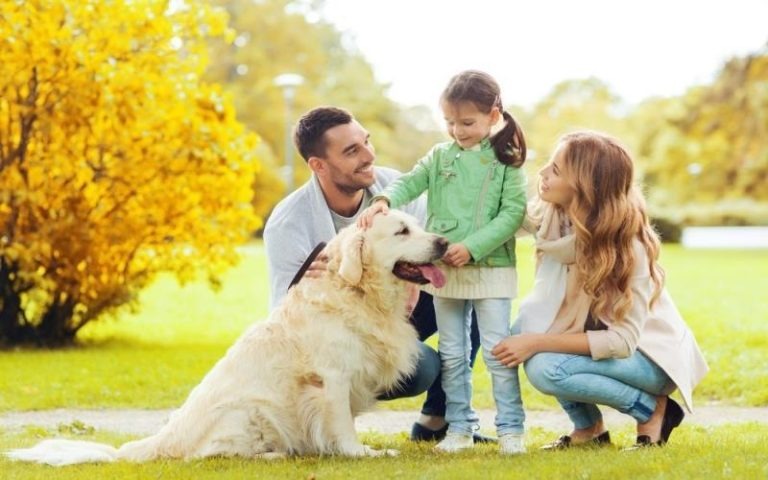
Affection Limits: Understanding When Love Becomes Too Much for Your Pet
Learn to recognize your pet’s boundaries and avoid affection overload with expert advice on reading signals, respecting personal space, and fostering a healthy human-animal bond for happier, stress-free pets.
🐶 Pet Star
32 min read · 9, Jul 2025

Introduction
Pets bring immeasurable joy and companionship into our lives, inspiring us to shower them with love and affection. However, what starts as a kind gesture can sometimes overwhelm animals, leading to stress, anxiety, and behavioral problems. Just like humans, pets have boundaries—limits to the amount and type of attention they’re comfortable receiving. Recognizing when affection crosses the line into overload is crucial to nurturing a respectful, trusting, and happy relationship with your furry, feathered, or scaled companion.
This article delves deep into the concept of respecting pet boundaries, explaining why animals may sometimes push back against affection and how to read their subtle and overt signals. We explore practical strategies for pet owners to ensure their love is received in the best possible way, backed by insights from veterinarians, animal behaviorists, and trainers. Whether you’re a dog lover, cat enthusiast, or exotic pet caretaker, understanding these boundaries will enhance your bond and prevent unintentional stress or discomfort.
Why Pets Need Boundaries: The Science Behind Affection Overload
The Importance of Personal Space
Like people, pets require personal space to feel safe and secure. Overwhelming a pet with constant petting, hugging, or handling can trigger discomfort or anxiety, especially in more independent species such as cats or reptiles. Personal space is their refuge—a zone where they can relax without sensory overload.
Stress Response to Excessive Affection
When a pet experiences too much affection, they may show signs of stress or overstimulation. Physiologically, this can involve increased heart rate, changes in breathing patterns, or release of stress hormones such as cortisol. Behaviorally, it might look like avoidance, aggression, or shutdown. Recognizing these responses is key to preventing long-term emotional or physical harm.
Variability Among Species and Individuals
It’s important to remember that tolerance levels vary widely. Dogs bred for close human companionship often enjoy and seek more contact, whereas many cats prefer affection on their terms. Exotic pets, like birds or reptiles, can be even more sensitive to touch. Even within a species, individual personality plays a big role in boundary preferences.
Recognizing Pet Signals: When Affection Turns Into Overload
Subtle Body Language Cues
Pets communicate discomfort long before it escalates into overt behaviors. For example:
- Cats: Tail flicking, ears flattening, slow blinking turning into wide eyes, turning their head away.
- Dogs: Lip licking, yawning, shifting body posture, avoiding eye contact, turning their body sideways.
- Birds: Ruffled feathers, hissing, backing away, biting the air.
Understanding these signals helps owners respect their pets’ limits before they become stressed.
Overt Behaviors Indicating Stress
If subtle cues go unnoticed, pets may resort to stronger reactions, such as:
- Growling, snapping, or biting in dogs and cats.
- Feather plucking or loud squawking in birds.
- Hissing or defensive posturing in reptiles.
These behaviors are not signs of “bad” temperament but important messages telling you to stop.
The Role of Early Socialization and Past Experiences
Impact of Early Handling
Animals handled gently and appropriately from a young age are more likely to tolerate affection well. Puppies and kittens exposed to varied, positive human interactions tend to seek contact and enjoy petting.
Trauma and Fear-Based Reactions
Pets with histories of neglect or abuse may have very low tolerance for touch. They might associate human contact with fear or pain, requiring careful, gradual desensitization and patience.
Respecting Different Species’ Boundaries
Dogs: The Affection Seekers With Limits
Most dogs enjoy petting and play, but many prefer it to be predictable and controlled. Rough handling or overstimulation during petting can cause anxiety or aggression. Understanding dog-specific signs like whale eyes (showing the whites of eyes) or stiff bodies is essential.
Cats: The Independent Connoisseurs
Cats often crave affection but on their own terms. They may tolerate brief petting sessions focused on favorite spots but dislike overstimulation. Recognizing when a cat’s tail twitches or ears rotate backward signals time to stop.
Birds: Sensitive to Touch and Environment
Birds can be highly sensitive to touch and often stress easily. Overhandling can result in biting, feather plucking, or fearfulness. Building trust slowly and respecting a bird’s “no” is vital.
Reptiles and Small Mammals: Boundaries in Subtlety
Though often thought of as less interactive, reptiles and small mammals also have comfort zones. They may tolerate handling briefly but require quiet, gentle treatment. Overhandling leads to stress behaviors like hiding, refusal to eat, or aggression.
How to Establish and Maintain Healthy Boundaries
Creating a Safe Space
Provide your pet with a dedicated area where they can retreat whenever they want peace—whether it’s a crate, perch, or hideaway. Respect this space and never force interaction there.
Scheduled Affection Time
Instead of continuous attention, schedule affection periods interspersed with quiet time. This respects your pet’s needs and builds positive anticipation for interaction.
Watch and Respond to Cues
Always observe your pet’s body language during affection and stop immediately if signs of discomfort appear. Consistency in this approach teaches your pet that their boundaries will be honored.
Training and Conditioning Pets to Accept Affection
Positive Reinforcement
Use treats and praise when your pet willingly accepts touch or affection. This encourages voluntary, stress-free interactions.
Gradual Desensitization
For pets wary of touch, gradually introduce affection in small, controlled doses paired with rewards. Slowly increase the duration as comfort grows.
Handling Exercises for Young Animals
Early exposure to gentle handling helps young animals develop tolerance. Incorporate daily touch exercises focusing on different body parts.
Common Mistakes That Lead to Boundary Issues
Ignoring Early Warning Signs
Failing to recognize subtle stress cues can escalate discomfort, resulting in fear or aggression.
Overhandling or Forced Affection
Forcing interaction when a pet wants space damages trust and increases anxiety.
Inconsistent Responses
Mixed signals from different family members confuse pets about acceptable behavior.
The Importance of Owner Education and Empathy
Learning to Read Your Pet’s Signals
Investing time in learning species-specific communication empowers owners to respect boundaries effectively.
Adjusting Expectations
Accepting that not all pets desire constant affection fosters healthier relationships and reduces frustration.
Building Emotional Intelligence Around Pet Boundaries
Understanding Your Pet’s Emotional Landscape
Respecting pet boundaries isn’t just about avoiding physical discomfort; it’s about tuning into your pet’s emotional world. Animals experience feelings like anxiety, fear, contentment, and joy, though they express these emotions differently than humans. By developing emotional intelligence around your pet’s responses, you foster a more empathetic relationship.
For instance, a dog may wag its tail when happy but stiffen and avert gaze when anxious. Cats purring doesn’t always mean comfort—it could be self-soothing during stress. Recognizing these nuances helps you adjust your approach to affection accordingly.
Training Yourself to Respond Appropriately
Patience and mindfulness are critical in tuning your responses. Instead of assuming your pet “wants” constant petting because they are close to you, check for signs of enjoyment versus tolerance. Practicing self-restraint when your pet signals discomfort prevents overwhelming them and strengthens trust.
The Impact of Respecting Boundaries on Pet Behavior
Reduced Aggression and Fear Responses
Over-affection, especially when ignoring cues, can lead to defensive aggression or fear-related behaviors. Studies in animal behavior confirm that pets with respected boundaries show fewer incidents of biting or growling. They learn that people respect their comfort zones, reducing the need for self-defense.
Improved Socialization and Adaptability
Pets who feel safe are more likely to engage positively with new people, animals, and environments. Respecting boundaries lays the foundation for social confidence, essential for well-rounded pets.
How Environment Influences Pet Boundaries
High-Stress vs. Low-Stress Environments
Pets in chaotic or noisy homes often have lower tolerance for affection overload. Sensory overstimulation can make even gentle petting stressful. Conversely, calm and predictable environments promote relaxation and acceptance of affection.
The Role of Routine
Animals thrive on routine, which provides predictability and control. When affection occurs in consistent, familiar settings—such as after a meal or during quiet evening time—pets are more receptive.
Affection Overload in Multi-Pet Households
Differing Boundaries Among Pets
Each pet in a multi-animal home has unique boundaries. One dog may enjoy continuous petting, while another may prefer brief, controlled interactions. Respecting each pet’s limits individually prevents conflicts and stress.
Managing Shared Spaces
Designate separate safe zones for each pet to retreat when feeling overwhelmed. Ensure that affection from humans is balanced to prevent jealousy or competition.
Cultural Perspectives on Pet Affection and Boundaries
Varied Norms Around the World
Different cultures exhibit diverse attitudes toward pet handling. In some societies, constant petting is the norm; in others, animals are treated with more distance and formality. Understanding these perspectives can inform better, culturally sensitive pet care practices.
Western Trends and Over-Affection
Western pet owners often anthropomorphize animals, projecting human emotional needs onto pets, which can lead to boundary oversights. Awareness of this tendency encourages more balanced affection.
Balancing Affection and Independence: A Harmonious Relationship
Encouraging Independent Play and Exploration
Allowing pets time to explore and engage independently promotes self-confidence and reduces clinginess, which in turn fosters healthier boundaries.
Celebrating Mutual Respect
Respecting your pet’s signals creates a balanced relationship based on mutual trust rather than one-sided affection.
Conclusion
Respecting your pet’s boundaries is essential for building a trusting, loving relationship that benefits both you and your companion. Pets communicate their comfort levels through a variety of subtle and overt signals, and understanding these cues helps prevent affection overload—a situation that can cause stress, anxiety, and behavioral issues. Recognizing that every animal is an individual with unique needs and limits empowers you to tailor your interactions in ways that promote well-being and happiness.
The journey to respecting pet boundaries requires patience, observation, and empathy. By creating safe spaces, scheduling affection, and responding appropriately to your pet’s signals, you foster a secure environment where your pet feels valued and understood. Training techniques such as positive reinforcement and gradual desensitization can enhance your pet’s tolerance and enjoyment of affection over time, strengthening your bond without overwhelming them.
Moreover, educating family members and visitors about your pet’s boundaries ensures consistency and reduces confusion, creating a harmonious home for all. Remember, affection is a gift best given thoughtfully—too much love, even when well-intentioned, can become a source of discomfort rather than joy.
Ultimately, respecting your pet’s boundaries is an act of kindness and respect that enhances their quality of life and deepens your connection. This understanding enriches the human-animal bond and lays the foundation for a happy, healthy relationship built on mutual trust.
Q&A
Q1: How can I tell if my pet is feeling overwhelmed by affection?
A: Look for signs like turning away, stiffening, lip licking, yawning, or avoiding eye contact. These indicate your pet needs space.
Q2: What should I do if my pet growls or snaps when I pet them?
A: Stop immediately and give your pet space. These behaviors are warnings that boundaries are being crossed.
Q3: Can all pets learn to enjoy more affection?
A: While many pets can increase tolerance through gradual training, respecting individual limits remains important.
Q4: How do I teach children to respect a pet’s boundaries?
A: Educate them about pet body language, supervise interactions, and encourage gentle, calm approaches.
Q5: Why does my cat sometimes bite during petting?
A: Cats often use “petting bites” to signal overstimulation or a desire to stop.
Q6: Are some species more sensitive to affection than others?
A: Yes, species like birds and reptiles often have lower tolerance for touch compared to dogs.
Q7: How can I help a pet with past trauma accept affection?
A: Use slow, positive reinforcement and allow the pet to initiate contact on their terms.
Q8: What environment factors influence affection boundaries?
A: Stressful environments reduce tolerance for affection; calm, predictable settings improve comfort.
Q9: Can technology help monitor my pet’s stress levels?
A: Yes, wearable devices and video monitoring can provide insights but don’t replace careful observation.
Q10: When should I seek professional help for boundary issues?
A: If your pet shows persistent aggression or fear despite consistent training, consult a certified behaviorist or veterinarian.
Similar Articles
Find more relatable content in similar Articles

Pets and Mental Health: The Science Behind Emotional H..
Discover the profound impact o.. Read More

How Climate Change Affects Wild and Domestic Animals...
Climate change is dramatically.. Read More

The Growing Trend of Therapy and Emotional Support Ani..
Exploring the remarkable rise .. Read More

How Pets Strengthen Family Bonds...
Pets are more than just compan.. Read More
Explore Other Categories
© 2024 Copyrights by rPets. All Rights Reserved.